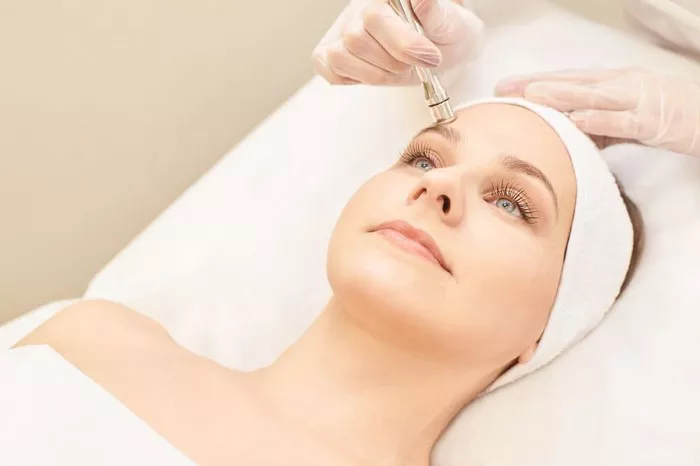Embarking on the journey to smoother skin often leads individuals to grapple with the question of whether shaving peach fuzz can lead to the unwelcome presence of stubble. Peach fuzz, the fine and often barely noticeable facial hair, can be a source of concern for those seeking a flawless complexion. This comprehensive guide dives into the nuances of shaving peach fuzz, explores the potential for stubble, and unveils the intricacies of achieving that coveted silky smoothness.
Understanding Peach Fuzz
Peach fuzz, scientifically known as vellus hair, adorns the faces of many individuals, offering a soft and almost translucent covering. Unlike terminal hair, which is thicker and more pigmented, peach fuzz is fine and typically less noticeable. While it serves various functions, including temperature regulation and sensory perception, some individuals opt to remove or reduce its visibility for aesthetic reasons.
Shaving Peach Fuzz
Shaving peach fuzz involves using a razor or specialized tool to trim or remove the fine hair from the surface of the skin. The process is often touted for its ability to create a smoother canvas, enhance makeup application, and contribute to an overall polished appearance. However, the concern that frequently arises is whether this seemingly innocuous act can inadvertently lead to the emergence of stubble.
Shaving Peach Fuzz and Stubble
The relationship between shaving peach fuzz and the development of stubble is a multifaceted one. When peach fuzz is shaved, the hair is cut at the surface level, creating a blunt edge. As the hair begins to grow back, the blunt edge can give the appearance of stubble, especially if the regrowth coincides with a darker or more pigmented phase of the hair growth cycle. The perception of stubble is influenced by factors such as hair color, skin tone, and individual hair growth patterns.
Dispelling Common Misconceptions
Contrary to a common misconception, the presence of apparent stubble after shaving peach fuzz does not necessarily mean that the hair has become thicker or coarser. The perception of stubble is often a result of the hair being cut at a different angle than it naturally grows, creating a sharper and more noticeable appearance. Additionally, the regrowth of vellus hair is influenced by individual factors, and the experience can vary widely among different individuals.
Tips for Shaving Peach Fuzz
While the appearance of stubble after shaving peach fuzz is a natural occurrence, certain practices can minimize its visibility and help individuals achieve a smoother outcome.
Use a High-Quality Razor: Investing in a high-quality razor designed for delicate facial hair can contribute to a smoother shave and reduce the likelihood of creating a blunt edge.
Exfoliate Before Shaving: Gentle exfoliation before shaving helps remove dead skin cells, allowing the razor to glide more smoothly. This can contribute to a cleaner shave and reduce the chances of stubble.
Shave in the Direction of Hair Growth: Shaving in the direction of hair growth helps minimize the blunt edge effect, resulting in a more subtle regrowth appearance. This is particularly relevant when dealing with peach fuzz on the face.
Hydrate and Moisturize: Ensuring the skin is well-hydrated and applying a moisturizer post-shave contributes to a smoother complexion. Well-moisturized skin reflects light differently, potentially reducing the visibility of stubble.
Consider Professional Options: For individuals seeking a longer-lasting solution, professional options such as dermaplaning, which involves using a scalpel to remove peach fuzz and dead skin cells, may be explored. These procedures are typically performed by trained skincare professionals.
The Role of Hair Growth Cycle
Understanding the hair growth cycle plays a pivotal role in managing expectations regarding regrowth after shaving peach fuzz. Hair goes through various stages, including anagen (growth), catagen (transition), and telogen (resting). The regrowth phase after shaving is influenced by the individual hair’s stage in this cycle. Patience is key, as the apparent stubble effect may diminish as the hair progresses through subsequent cycles.
The Truth About Shaving Peach Fuzz
Myth 1: Shaving Makes Hair Thicker and Darker Shaving peach fuzz does not alter the thickness or color of the hair. The perception of increased thickness is often due to the blunt edge created during shaving.
Myth 2: Stubble Means Coarser Hair Stubble after shaving peach fuzz does not indicate a change in hair texture. The sensation of coarseness is a result of the hair being cut at a different angle.
Myth 3: Shaving Causes Ingrown Hairs When done correctly, shaving peach fuzz should not cause ingrown hairs. Proper exfoliation and skincare can further reduce the risk of ingrown hairs.
Myth 4: Shaving Accelerates Hair Growth Shaving does not alter the rate of hair growth. The regrowth of peach fuzz after shaving is a natural part of the hair growth cycle.
Final Thoughts
In conclusion, the intersection of shaving peach fuzz and the emergence of stubble is a nuanced terrain influenced by individual factors, grooming practices, and the intricacies of hair growth. While the appearance of stubble after shaving peach fuzz is a common occurrence, understanding the dynamics of vellus hair and employing thoughtful grooming practices can contribute to a smoother and more refined outcome. Whether one chooses to embrace peach fuzz or embark on a journey of meticulous removal, the key lies in informed choices, personalized approaches, and the celebration of individual beauty in all its forms. As you navigate the delicate dance of peach fuzz grooming, may each shave be a step toward the silky smoothness you desire, without the shadows of stubble to obscure your radiant complexion.

